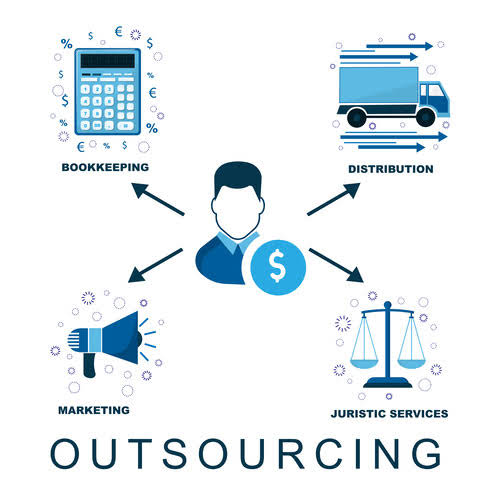It’s based on what the company thinks they can get if they sell that thing when it’s no longer useful. Sometimes, salvage value is just what the company believes it can get by selling broken or old parts of something that’s not working anymore. In accounting, an asset’s salvage value is the estimated amount that a company will receive at the end of a plant asset’s useful life. It is the amount of an asset’s cost that will not be part of the depreciation expense during the years that the asset is used in the business. Accountants use several methods to depreciate assets, including the straight-line basis, declining balance method, and units of production method. Each method uses a different calculation to assign a dollar value to an asset’s depreciation during an accounting year.
What Is the Loss for Tax Value?
For calculation of the disposal value of an asset, it is necessary to get its original cost and depreciated value. To calculate disposal value, one typically estimates the expected useful life of the asset and then estimates the value of the asset at the end of that period. https://www.bookstime.com/ This can be done by considering factors such as market conditions, technological obsolescence, and replacement costs. There could be different ways to calculate depreciation, two most commonly used methods are straight line method and units of production method.
Choose a depreciation method
Many companies use a salvage value of $0 because they believe that an asset’s utilization has fully matched its expense recognition with revenues over its useful life. Salvage value is also called scrap value and gives us the annual depreciation expense of a specific asset. It must be noted that the cost of the asset is recorded on the company’s balance sheet whereas the depreciation amount is recorded in the income statement. Some methods make the item lose more value at the start (accelerated methods), like declining balance, double-declining balance, and sum-of-the-years-digits. The depreciable amount is like the total loss of value after all the loss has been recorded.
Residual Value Explained, With Calculation and Examples
By projecting the asset’s remaining value after its functional life has ended, they can more precisely gauge the asset’s cumulative value over its entire period of utility. Grasping this idea is crucial as residual value aids companies in making educated choices related to asset acquisition, depreciation, and disposal. Understanding this concept is important as it helps organizations make informed decisions regarding the purchase of an asset, the sale of an asset, and its rehauling. When you’re using straight-line depreciation, you can set up a recurring journal entry in your accounting software so you don’t have to go in and manually prepare one every time. Annual straight line depreciation for the refrigerator is $1,500 ($10,500 depreciable value ÷ seven-year useful life).
Depreciation Calculation
- The salvage value calculator evaluates the salvage value of an asset on the basis of the depreciation rate and the number of years.
- The fraud was perpetrated in an attempt to meet predetermined earnings targets.
- Salvage value directly determines the amount of depreciation reported on the asset, which affects the company’s profits.
- The straight-line depreciation method is one of the simplest ways to calculate how much an asset’s value decreases over time.
The after tax salvage value online calculator provides us the after-tax value of the salvage of the asset. By using a site like Diablo Trade, you can simply take a photo of an item you have to sell and get offers, much like eBay but with in-game gold. Using this site, my partner sold a Greater Affix ring for 5 billion, yes, BILLION gold, and neither of us has been short of gold this season. The best items to sell are those with multiple Greater Affixes and amulets with specific passive buffs. PwC refers to the US member firm or one of its subsidiaries or affiliates, and may sometimes refer to the PwC network.
- Several factors can influence residual value estimation, including the asset’s condition, technological advancements, market demand, and the expected useful life.
- You can find the asset’s original price if the salvage price and the depreciation rate are known to you with the salvage calculator.
- Calculate the annual depreciation rate by dividing 1 by the useful life in years.
- Constant use and other factors like the nature and quality of these assets cause a continual deterioration.
- By subtracting the residual value from the initial investment, institutions can determine the net cash inflows or outflows, helping them assess the profitability and viability of the investment.
- For example, the double-declining balance method suits new cars well since they tend to lose a significant amount of value in the first couple of years.
Example of Asset Salvage Value
You paid $10,000 for the fridge, $1,000 in sales tax, and $500 for installation. The majority of companies assume the residual value of an asset at the end of its useful life is zero, which maximizes the depreciation expense (and tax benefits). The impact of the salvage (residual) value assumption on the annual depreciation of the asset is as follows.
Sum-of-the-Years-Digits Depreciation Method
Salvage value is the amount for which the asset can be sold at the end of its useful life. For example, if a construction company can sell an inoperable crane for parts at a price of $5,000, that is the crane’s salvage value. If the same crane initially cost the company $50,000, then the total amount depreciated how to get salvage value over its useful life is $45,000. Under most methods, you need to know an asset’s salvage value to calculate depreciation. To calculate the annual depreciation expense, the depreciable cost (i.e. the asset’s purchase price minus the residual value assumption) is divided by the useful life assumption.
Diablo 4: How to get Mythic Uniques as fast and easy as possible
If it is too difficult to determine a salvage value, or if the salvage value is expected to be minimal, then it is not necessary to include a salvage value in depreciation calculations. Instead, simply depreciate the entire cost of the fixed asset over its useful life. Any proceeds from the eventual disposition of the asset would then be recorded as a gain.



